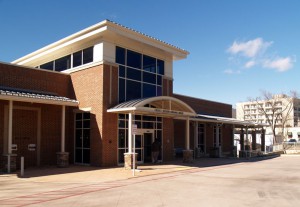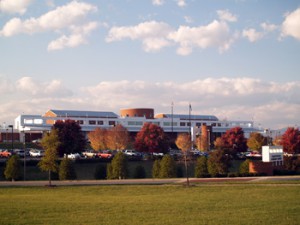 Belmont is a popular Charlottesville, VA neighborhood, located right off the downtown pedestrian mall, and steeped in culture, history, beauty, and modern convenience.
Belmont is a popular Charlottesville, VA neighborhood, located right off the downtown pedestrian mall, and steeped in culture, history, beauty, and modern convenience.
Here’s a little history on the early growth of Belmont: Belmont, the neighborhood, was born when the Belmont Land Company purchased the remaining property of the late Slaughter W. Ficklin, owner of the Belle-Mont estate. James H. Buck Jr. shares in Belmont: The History of a Neighborhood that the other main influences that led to the establishment of Belmont were: “the old Three Notched or Three Chopt Road that connected Charlottesville with Richmond…the old Scottsville Road (presently Sixth Street in Charlottesville)…[and] the flourishing of railroad activity in the late 1800s.”
Through the decades Belmont evolved and grew, and with its central location and a variety of places to eat, hear music, shop, play, and live, it is truly at the heart of Charlottesville, and a beautiful place to call home. Here are 5 reasons why living in Belmont today is amazing:
1. The Plentiful Food and Drink
Belmont is full of wonderful places to eat, drink, and be merry. In downtown Belmont, the area closest to the downtown mall, restaurants, art galleries, and convenience stores are conveniently interspersed among the residential streets. Belmont offers a variety of choices, ranging from the delicious locally sourced meals available at The Local to the incredible, award-winning beer selection and organic fare at Beer Run. When you’re in Belmont, any palette or preference can be pleased somewhere nearby. Here are a few highlights in available fare:
- Tavola Restaurant, offers upscale and exquisite Italian fare. It’s a perfect choice for an intimate and truly decadent night out (try the gnocchi!).
- Mas, just a few doors down from Tavola, offers a fun and fresh atmosphere serving an inspired (and ever changing) tapas menu.
- Lampo, a small and intimate space serving delicious wood-fired pizzas and other locally sourced entrees. Best part is the pizza scissors to cut your own slice!
- Spudnuts was opened in 1969 by Richard Wingfield. His daughter, Lori, runs it today and continues to keep Charlottesville residents happy with their fabulous potato based donuts. If you’ve never had a spudnut, you really must try a classic glazed spudnut as well as the blueberry cake variety. They often sell out by noon so plan on a morning visit.
2. Proximity to Downtown Charlottesville and Music Venues
- The Pavilion: This large venue adjacent to the Belmont Bridge brings nationally and even internationally known and celebrated musical artists of every genre to Charlottesville. This outdoor arena with both a covered and grassy area also hosts the free weekly concert series, Fridays after 5, from April to September.
- The Jefferson Theater, built in 1912 and renovated in 2006, is a historic, indoor theatre on the downtown mall that currently thrives as a popular music venue.
- The Paramount Theater, originally built in 1931 as a movie theatre, was fully renovated in 2004 and now is a successful community performing arts venue. In 2015 they even re-illuminated their historic, massive blade sign with retro blinking lights.
- The Restaurants and Shops Downtown range from hotdog stands, an elegant movie theatre with a built in restaurant (The Violet Crown) to a selection of award winning international cuisine. Also keep in mind a visit to the Virginia Discovery Museum, the various art galleries, and The McGuffey Art Center.
3. The Views
- The Views from Belmont Park: This hilltop park, completed in 1915, offers 360 degree panoramic views of Charlottesville and the Blue Bridge Mountains to the west. With benches, a picnic shelter, playground, basketball court, and water play area, it’s a peaceful and fun place for community members to gather.
- The Views from the Belmont Bridge: The current version of the Belmont Bridge was built in 1961 to connect Ninth St. and Avon St. Belmont residents enjoy crossing this bridge by car or foot to easily reach downtown. When you walk over the bridge, I highly recommend pausing as the bridge goes over the train tracks; you will see a unique view of Charlottesville’s downtown stretching before you that is particularly charming at sunset.
- The Belmont neighborhood also went through a beautification between 1996 and 1999, which entailed the addition of new paved crosswalks, trees, and planters throughout downtown Belmont.
4. The Art and Culture
Belmont, like Charlottesville as a whole, blooms with culture and artistic expression.
- The Bridge PAI (progressive arts initiative) is a local gallery and community organization that focuses on authentic art projects that include, invigorate, and express the local community. This art center is located next to the Belmont Bridge (across from Spudnuts).
- The nearby IX Art Park on 2nd St. offers outdoor food truck catered concerts, art openings, flea markets, drawing parties, and a variety of other fun activities for young and old.
- The Innovative Tom Tom Festival’s Belmont Block party is a free yearly celebration that brings the neighborhood together for music, food, and even collaborative street art.
5. Convenience and Accessibility
While Belmont is an active, engaging, and fulfilling place to live all on its own, it also offers convenient access to other popular and useful parts of town. These include:
- Pantops, an area offering additional shopping and eating options, accessible via High St. and Route 250.
- Interstate 64, which links to Richmond, Waynesboro, and beyond, via Monticello Ave. or 5th Street.
- Scottsville, a lovely small town to the south along the James River, well worth a visit, accessible via Route 20.
- UVA, the acclaimed educational institution and cultural center designed by Thomas Jefferson, reachable from Belmont via Cherry Ave.
Belmont offers its community members enjoyable activities, charming residential neighborhoods, and convenience. It is located near the intersections of several major travel routes yet remains local, welcoming, and friendly. It is an amazing place to live for the reasons listed above, and offers unique access to many of Charlottesville’s cultural delights.
Source:Buck, James H., Jr. “Belmont: The History of a Neighborhood.” Web. 7 Mar. 2016. Published May, 1980 in Charlottesville, VA


 The city of Charlottesville itself is a thriving mid-Atlantic hub with the charm of a small town and the amenities of a major city. The surrounding locations are close enough for you to enjoy Charlottesville’s various offerings but far enough to have developed their own identities. Gayle Harvey Real Estate has tons of properties in the counties surrounding the city. Together we’ll take a look at a few of the neighborhoods that comprise the “Greater Charlottesville Area.”
The city of Charlottesville itself is a thriving mid-Atlantic hub with the charm of a small town and the amenities of a major city. The surrounding locations are close enough for you to enjoy Charlottesville’s various offerings but far enough to have developed their own identities. Gayle Harvey Real Estate has tons of properties in the counties surrounding the city. Together we’ll take a look at a few of the neighborhoods that comprise the “Greater Charlottesville Area.”



 If we’re being honest with ourselves, no one actually likes flying. Or at least, no one actually likes the process of flying. Once you get up into the air it’s all gravy, but this writer has never been a fan of the hustle and bustle of the terminal, the anxiety that stems from baggage claim, or the Greek tragedy that is terminal parking. The good news is that seven-odd miles north of the city, the Charlottesville Airport (CHO) makes travel convenient. Celebrating its 60th anniversary less than a year ago, this relatively small public-use airport has been operating commercial flights since 1955. It generally has about 46 non-stop flights every day, to six major cities. The period between August 2014 and July 2015 saw the airport handle an estimated 261,050 passengers (or enplanements), up from 197,776 in 2010…and this is just with one runway! Though Charlottesville is still fairly convenient to major airports like Richmond and Dulles, there’s nothing like flying into your home in Charlottesville and getting a quick ride up or down 29, especially after a long journey.
If we’re being honest with ourselves, no one actually likes flying. Or at least, no one actually likes the process of flying. Once you get up into the air it’s all gravy, but this writer has never been a fan of the hustle and bustle of the terminal, the anxiety that stems from baggage claim, or the Greek tragedy that is terminal parking. The good news is that seven-odd miles north of the city, the Charlottesville Airport (CHO) makes travel convenient. Celebrating its 60th anniversary less than a year ago, this relatively small public-use airport has been operating commercial flights since 1955. It generally has about 46 non-stop flights every day, to six major cities. The period between August 2014 and July 2015 saw the airport handle an estimated 261,050 passengers (or enplanements), up from 197,776 in 2010…and this is just with one runway! Though Charlottesville is still fairly convenient to major airports like Richmond and Dulles, there’s nothing like flying into your home in Charlottesville and getting a quick ride up or down 29, especially after a long journey. When we think of living in Charlottesville, our minds tend to conjure up of images of vineyards, breweries, restaurants, sporting events, and high-profile concerts. But there are a few unconventional, out-of-the-way places that have found a home in Charlottesville. We’ll share our favorites here.
When we think of living in Charlottesville, our minds tend to conjure up of images of vineyards, breweries, restaurants, sporting events, and high-profile concerts. But there are a few unconventional, out-of-the-way places that have found a home in Charlottesville. We’ll share our favorites here.